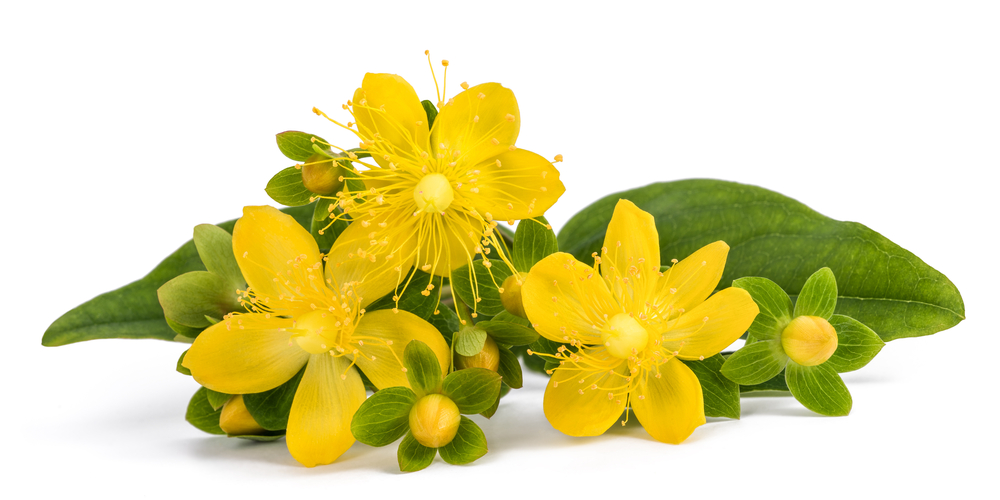St John’s Wort is a perennial herb with a long history of medicinal uses: this plant is a natural treatment for mild depression and anxiety. It thrives in hardiness zones between 4 and 10 and is not particularly challenging to grow. All it needs is a sunny location and well-draining soil. This plant isn’t fussy about soil conditions and doesn’t require frequent fertilizing or mowing. Let’s look at growing St John’s wort from seed.
Why Grow St John’s Wort?

Also known as goatweed, or chase-devil, this plant is a low-maintenance herb that might improve the looks of your garden: its pretty yellow flowers and bright green leaves will make any corner of your yard look lively. Not only does this herb look great alone (and in combination with other herbs), but it also attracts plenty of pollinators, including bees and butterflies. These woody shrubs only grow about 24 inches tall, making them perfect even for limited spaces. Their fragrant flowers last all summer, but the herb looks stunning all year round.
If you are looking for something easy to grow that will contribute to better aesthetics in your garden, look no further than St John’s Wort. Native to Europe, this plant came to the United States in the 17th century: it has been around since then. You may have to control this herb: there are reasons why it is an invasive species in some parts of the country. Ensure you check with your local restrictions before planting it in your yard.
But what about growing St John’s Wort from seeds? How does the process work, and what can you do to make the most out of these plants? To find an answer to these questions (and more), read on.
Growing St John’s Wort from Seeds
Growing St John’s wort isn’t challenging. But, to increase your chances of successful germination, you must follow a couple of steps. The good news is that these plants tolerate most soil conditions: there is no need for amendments, and you won’t have to spend too much time preparing the ground to welcome st John’s Wort seeds.
Depending on where you live, you may have to follow one strategy over the other. If you live somewhere with cold and long winters, we recommend starting your plants indoors about six to eight weeks before the last frost. Always check your local weather to plant your St. John’s wort accordingly. But if you are sure the danger of freezing temperatures is gone, you can sow your seeds outdoors.
When planting your St John’s wort outside, make sure to prepare the soil and choose a suitable location. Scatter the seeds on the ground and press them lightly into the soil. Avoid using too much pressure as germination occurs only with adequate sunlight. Pushing your plants too much underground might prevent them from developing into seedlings. Water them thoroughly during the first couple of weeks. Once you notice termination has occurred (which usually happens within 21 days from planting), you can decrease watering frequency. Do not fall into the trap of overwatering your plants: Sth John’s Worth is highly susceptible to root rot. Underwatering is much better than overdoing it.
Ensure you space your seeds. Giving them more room to grow will provide you with the best results. Seedlings should be no less than twelve inches apart. If you notice they grow denser, consider thinning your plants.
If you started your seeds indoors, transplant them outside when they get between two to three inches tall. Fertilizing these plants is not necessary. However, you can add mulch around them to increase water retention and improve nutrient content. If you live in a dry and hot region, this step is crucial to your plant’s survival.
Gradually introduce your seedlings to the outdoor conditions to increase your chances of success with these plants. Place them outside during the day and move them indoors when the night arrives. Increase the hours you expose your plants to lower temperatures little by little. By hardening your St John’s Wort this way, you’ll have fewer problems with your plants in the future.
Growing St John’s Wort From Seed: The Bottom Line
If you are looking for something easy to grow to increase the looks of your garden, consider getting St John’s Wort. This herb makes for an attractive ground cover and requires little to no care. It is easy to grow from seeds and will adapt to most conditions. Why ask for more?
You may also like: How to Make St. Augustine Grass Spread Quickly?
